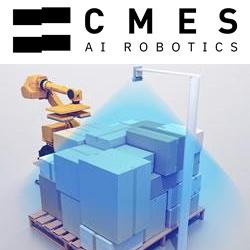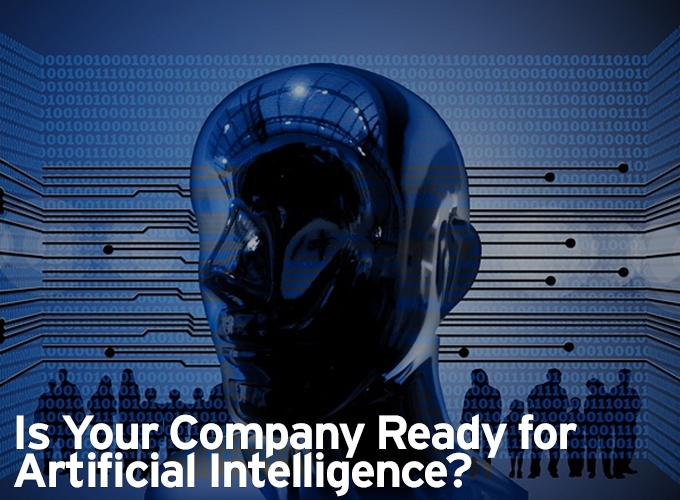The future of AI will require facing rapid change, vagueness, and difficulty. We need to be prepared for different adaptations of the future. There is no way to know what path the development of AI will take.
Len Calderone for | RoboticsTomorrow
What exactly is Artificial Intelligence (AI)? AI is the science that attempts to create intelligent robots. It is becoming an essential part of robotics.
This field is extremely technical and specialized. Artificial Intelligence is the programming of computers for particular attributes such as learning, analysis, solving problems, perception, developing logical plans, and the ability to control and move things.
We are living in a digital world and businesses are deluged with lots of data, which can assist with personalizing marketing plans, identifying prospects, anticipating new product development, and foreseeing customer service problems.
AI is one of the crucial emergent technologies disrupting business and industry today, yet very few companies think that they have the know-how to implement this technology. Teaching common sense, reasoning and problem-solving in robots is problematic.
Machine learning is an important part of AI. Learning without supervision requires the ability to identify patterns from barrages of data. Robots require this kind of intelligence in order to handle tasks such as object manipulation and movement.
Engineers can create artificial intelligence or impart human intelligence into machines or design technology that can create intelligence itself. By reverse-engineering the brain, engineers can design intelligent machines. These machines that can replicate human intelligence are the great challenges of engineering.
AI is about allocating decision-making to software. AI is advantageous at decision-making because it has become very good at predicting outcomes and researching problems, as well as being easier than ever to use. AI can outperform humans.
What does it take to employ artificial intelligence, and how can your company get to that stage if you’re not already there?
Are you aware of what you wish to forecast or discover? Do you have enough data that can be sourced for analyzing predictive models? Do you have what’s needed to define the models? Do you a baseline for predictions?
Appropriate pertinent data is essential for predictions. You can’t succeed without it. The more influences that you are endeavoring to take into account, the more data you will need—whether you’re doing everyday statistical forecasting, machine learning or deep learning.
Artificial intelligence is coming. Therefore, business owners should start preparing now. If a company doesn’t keep pace with technological advances, it may fall behind its industry. Start with small steps, as limited projects are more successful than overly ambitious large projects. Instead of employing AI to your entire business all at once, just start with a project that would enhance an existing process.
Garbage in, garbage out. The advantages of using AI won't be achieved if the data isn't comprehensive; consequently, the data needs to be organized before integration. You might want to build up the amount and type of information that is being collected. The efficiency of any AI application will depend on the quality of the data; therefore, you might want to increase your data sources so that the data needed for AI would be substantial and abundant.
Artificial intelligence is either opaque or transparent. Opaque AI may be hard to explain, as it is very ambiguous. This can be advantageous when you might be considering a mixture of creative answers to a problem. If you want decisions can be explained in a clear, rational manner, you utilize transparent AI. The one that you use will be determined by the application that works best for your company.
Your company will run into problems if it rushes to implement artificial intelligence without having a solid understanding of data analysis. Again, start small and decide what areas of your business will best benefit from AI.
The objective of AI is to free up people to handle more critical tasks. The more that a company supplies data about it’s customers the better AI can anticipate needs and provide appropriate solutions. This enables the company to devote more manpower to complex problems, leading to extremely valuable teams.
Structured data can't inform you about the reasons behind customers’ actions; but unstructured data, such as social media and flexible surveys, enable a company to interpret patterns.
There are many solutions available that will automate tasks. There is a lot more of what we used to do manually that can be committed to machines. Understand that there are such tools already available out there. These tools will help you evaluate what goes on within your own company that could be automated.
AI is for all industries, not just technological businesses, even though AI has been dominated by technology companies. Many other companies in other industries are using AI, such as financial services, healthcare, infrastructure, public services, and retail.
Some of the AI assistance vendors are companies like AmperAXP, which delivers a platform that can rapidly design, develop, and deploy AI; Next IT, which offers outcomes through AI powered solutions; FogHorn Systems, which is a developer of edge intelligence software for industrial and commercial IoT application solutions; Deep Instinct, which is the first company to incorporate deep learning in cybersecurity solutions; Conversica, which delivers conversational AI-driven lead software for marketing and sales organizations; Iris.ai, which provides AI science assistance and helps R&D Departments navigate and find research text content around their challenges; and many others.
Artificial intelligence software programs, which are fundamentally computer algorithms, evaluate large amounts of data to detect patterns and make conclusions. There is AI software that can detect early cancer or prevent a cyberattack. There is even chatbots on company websites, which answer questions and improve customer service.
Walmart Stores uses AI to adjust inventories by predicting future demand and reordering stock. Monsanto uses AI to identify the most promising molecules in bioengineering; while John Deere envisages AI to reduce chemical spraying volumes in farming.
The future of AI will require facing rapid change, vagueness, and difficulty. We need to be prepared for different adaptations of the future. There is no way to know what path the development of AI will take. AI could double annual economic growth for the major developed nations in the next twenty years. Already, AI is making an impact in medicine, law, finance, manufacturing, transportation, policing and retail. Robots are getting smarter and smarter; while humans are not.
Stephen Hawking predicted “the rise of powerful AI will be either the best, or the worst thing, ever to happen to humanity.”
The content & opinions in this article are the author’s and do not necessarily represent the views of RoboticsTomorrow
Featured Product


